Guppies are the most famous fish in the world, which are easy to breed at home. It is not surprising that breeders all over the world paid attention to them. This has led to the introduction of a variety of guppies on the market with unusual coloration and striking fins. Our article will discuss one popular breed of these viviparous fish – the guppy cobra.
General information
Guppy cobra is a breeding form of the common guppy (Poecilia reticulata). A distinctive feature of this breed is randomly distributed spots with a metallic sheen all over the body. This pattern is very reminiscent of the pattern of snakeskin, which is why sometimes the shape is called “snakeskin guppy”. In the domestic school of breeders “cobra” is customary to call only fish with pronounced vertical stripes in the back of the body (the so-called “zebrina”).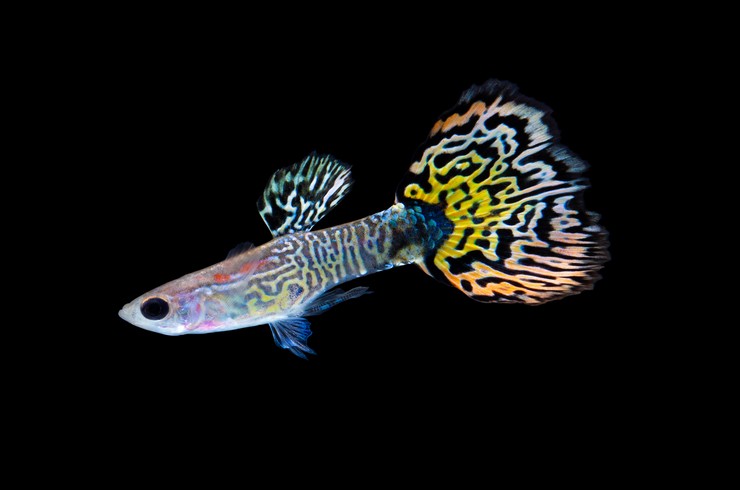
Keeping a guppy cobra at home is not difficult. It is the same with reproduction. Guppies are ovoviviparous fish. This means that the development of eggs takes place inside the mother’s body, while the eggs move along the reproductive tract, and a fully formed fry is born, ready for independent feeding.
Appearance
Guppy cobra is a small fish. The size of an adult male usually does not exceed 3 cm. Females can be twice as large. Gender dimorphism is pronounced: females are larger, do not have such a bright color, and most importantly, they lack gonopodia – a modified anal fin that allows males to place reproductive products in the female’s abdominal cavity.
Males have a large fan-shaped tail fin, which can be of different shapes. The caudal fin often has a pattern of numerous specks and spots.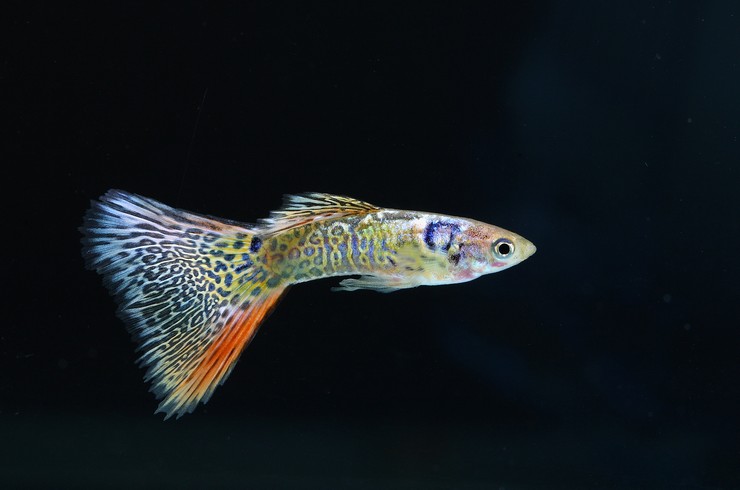
The lifespan of the guppy cobra directly depends on the temperature of the water in which the fish are kept. If it is moderate (24-26 ° C), then guppies can live 3-4 years. In warmer water, fish metabolism and reproductive activity increase, but they live much less.
Habitat
It is impossible to meet a guppy cobra in nature. This is an exclusive aquarium breed, obtained as a result of long-term selection.
The parent form – the common guppy – lives mainly in Central and South America, as well as on the islands of the Caribbean. However, amazing endurance and artificial introduction to different continents made guppies a cosmopolitan species that can be found in various parts of the world.
Care and maintenance
It is best to keep guppies in small groups of 6 or more. It is recommended that there are 2-3 females per male. The optimal aquarium for guppies is a capacity of 50 liters or more, while high breeding rates of fish must be taken into account. Guppies can jump out of the water, so it’s best to equip your aquarium with a lid.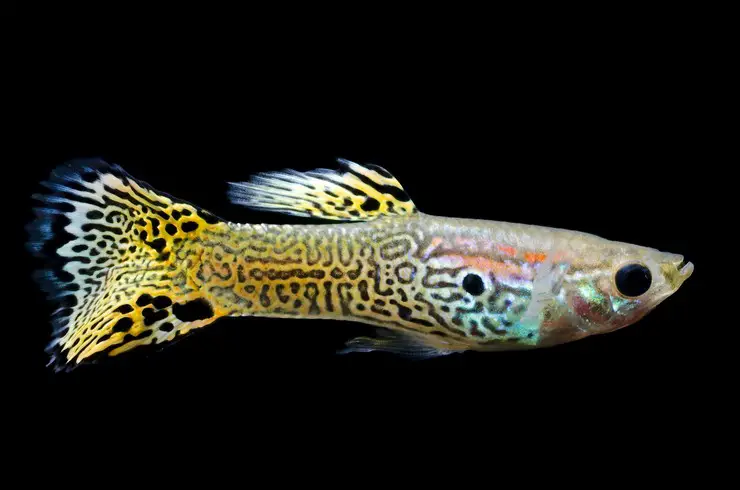
The soil used is quartz sand or natural small pebbles 2-6 mm in size, which is well suited for growing aquarium plants. The fish look best among natural decorations – stones, snags, and living plants. Areas with dense vegetation and open areas are required for free swimming. It is desirable that there are floating plants in the container, among which fry can hide.
For the comfortable keeping of a guppy cobra, you will need a filter, a compressor, and a thermostat of suitable power. A water change is made once a week – 20% of the volume of the aquarium.
Compatibility
Guppy cobra refers to peace-loving fish, which can be combined without problems in any calm tropical species, for example, zebrafish, rasbora, mollies, neons, tetras.
Bad neighbors will be large fish that perceive guppies as food, as well as active species such as barbs or large iris. These neighbors are more likely to pluck the males’ main pride – the tail.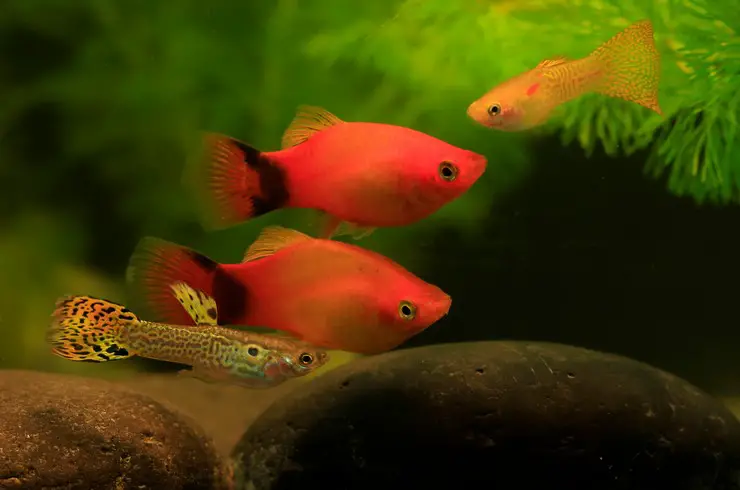
If you want to maintain the purity of the breed, then keeping the guppy cobra is necessary for a species aquarium. When living together with any other color forms, the color of the offspring can present a number of surprises, and the color of the original form will be lost.
Feeding guppy cobra
Guppies are small fish with small mouths and prefer to swim in the upper and middle layers of the aquarium. When keeping fish at home, it is more convenient and safer to feed them with high-quality dry food. Live and frozen food can become a source of infection and do not contain the full range of nutrients and vitamins needed by the guppy cobra.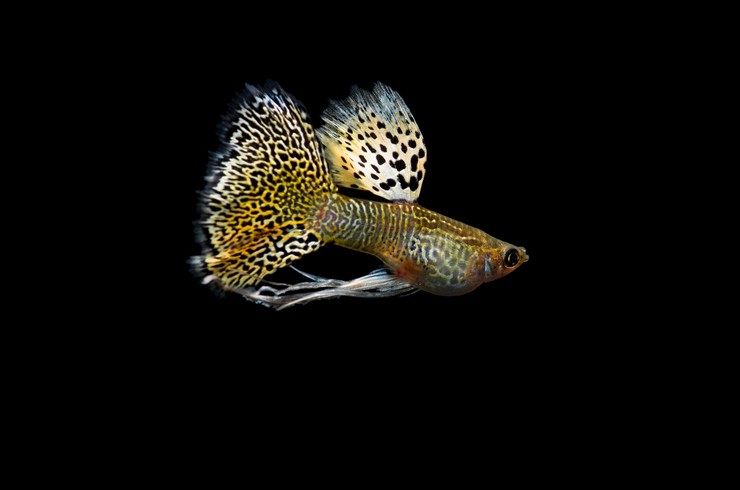
Especially for lovers of guppies and other viviparous fish, Tetra has developed special foods – Tetra Guppy Mini Flakes and Tetra Guppy Color Mini Flakes. These mini flakes are ideal for all types of fish that feed near the surface of the water. The flake size is specially designed for fish with small mouths, making it easier to eat. A special nutrient complex will provide your fish with all the nutrients they need. The food supports the health, color, and vitality of the fish.
The classic Tetra Rubin Flakes are also a good choice. The natural carotenoids in the food will keep your guppy cobras bright with red, orange, and yellow hues.
And for additional vital energy, you can use the innovative food in the form of chips – TetraPro Energy.
Reproduction and breeding
It is very easy to breed guppies at home because it is a viviparous species, so you do not need to create special conditions and take care of caviar.
Spawning is also possible without problems in a general aquarium, however, to maximize the preservation of the offspring, it is better to use a special jig or a separate aquarium.
Cobra guppies reach puberty at the age of 3-5 months. With the help of gonopodia, the male introduces his milk into the body of the female, where fertilization and further development of eggs take place. A relatively large fry is born, capable of feeding on its own. The fecundity of the female can reach up to 100 fries, depending on her age and health.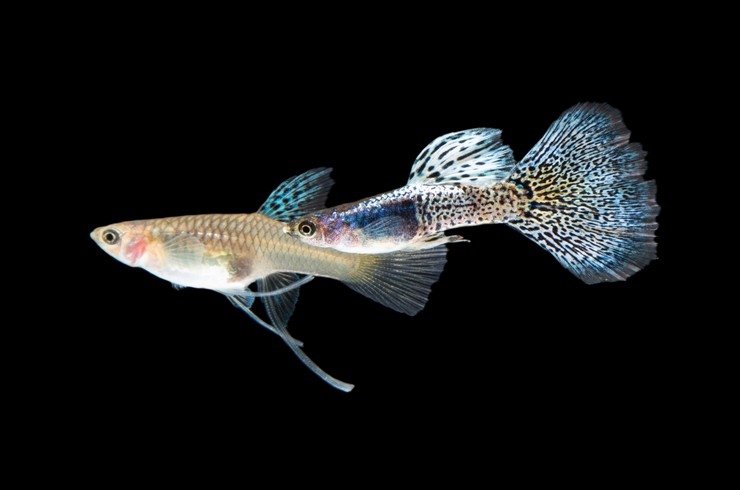
The parental instinct in the guppy cobra is not expressed, therefore, after the appearance of the juveniles, the female is removed, and more shelters are created for the babies.
Fry should be fed up to 4 times a day. TetraMin Baby is good food.
If you want to keep only one breed, then strict control over the fry is necessary. Once they have gender characteristics (usually around one month of age), males must be transplanted to avoid possible fertilization of females. Only the best in color and body shape of the individual is selected for reproduction.

